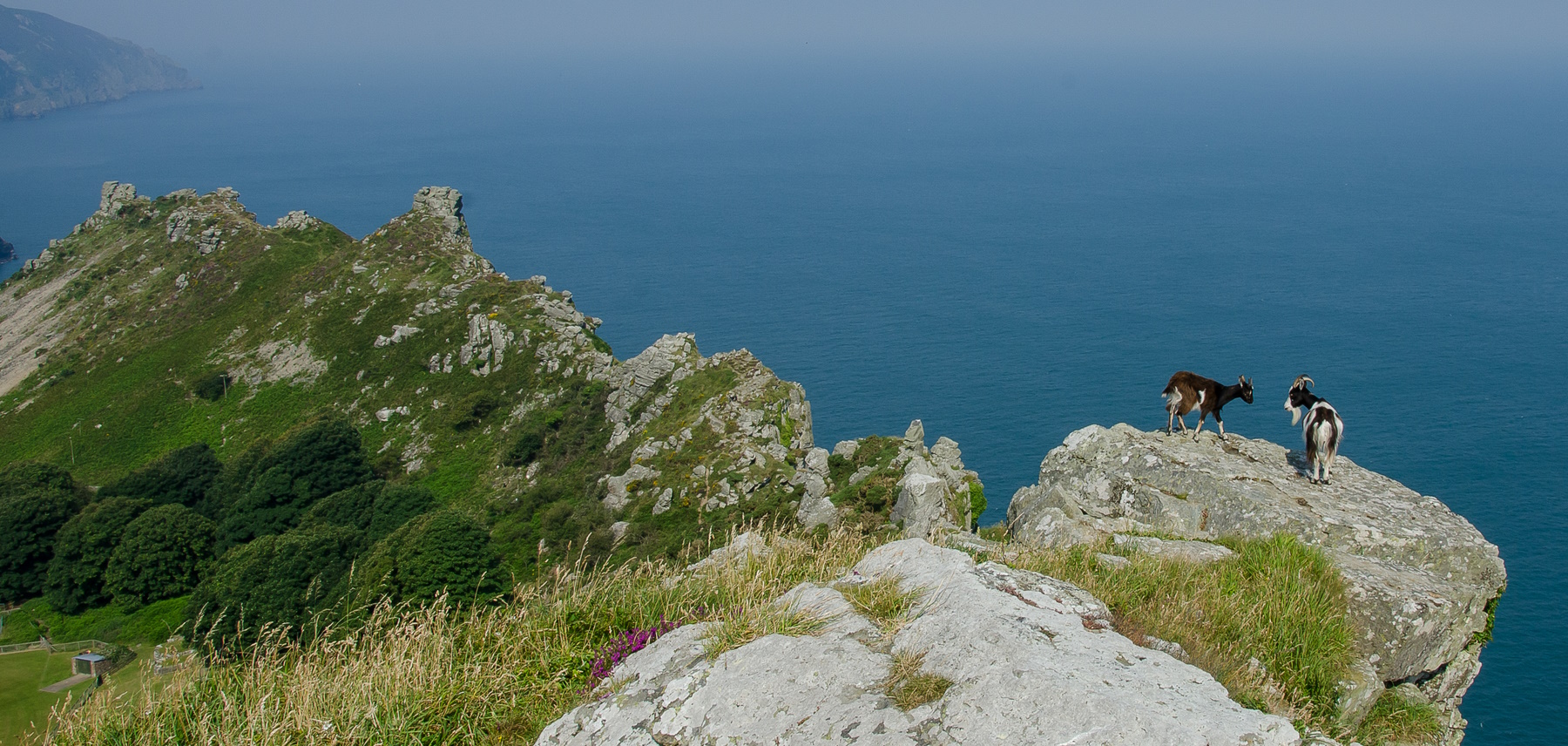The Valley of Rocks

With its natural amphitheatre of ancient stone, Exmoor’s Valley of Rocks has been inspiring poets, writers and visitors for hundreds of years. Perched high above the Bristol Channel, on Exmoor’s dramatic coastline, it’s a great place to take in the unique atmosphere, enjoy some of the best views in England, explore the exhilarating coastal paths or even come face to face with one of the famous feral goats.
Geologist think that the Valley is a dry river bed where once the River Lyn used to flow, before breaking through its current shorter route to Lynmouth leaving the Valley of Rocks high and dry. Another theory suggests that during the last Ice Age, about 20,000 years ago, advancing ice sheets blocked the River Lyn, forcing it westward to cut a new valley. As the ice retreated, the river returned to its old channel leaving the valley of Rocks as a valley without a river.
The rocks of the valley are some of the oldest on Exmoor, up to 400million years old and formed at a time when the land was under a shallow sea. You can still spot ripple marks and even fossils of the ancient life that flourished in sea-bed mud and sand that time and pressure have turned to stone
The extraordinary features of the Valley have long attracted artists and writers to visit and seek inspiration from the majesty of nature. In 1799 Robert Southey - Romantic poet and friend of Samuel Taylor Coleridge wrote:
“Imagine a narrow vale between two ridges of hills, somewhat steep, the southern hill turfed; the vale, which runs from east to west, covered with huge stones, and fragments of stone among the fern that fills it; the northern ridge completely bare, excoriated of all turf and all soil, the very bones and skeleton of the earth; rock reclining upon rock, stone piling upon stone, a huge terrific mass. A palace of the Pre-Adamite kings, a city of the Anakim must have appeared so shapeless, and yet so like the ruins of what had been shaped after the waters of the flood subsided.
I ascended with some toil the highest point; two large stones inclining on each other formed a rude portal on the summit. Here I sat down. A little level platform, about two yards long, lay before me, and then the eye immediately fell upon the sea, far, very far below. I never felt the sublimity of solitude before.”
There are plenty of ways to enjoy the Valley. Enjoy a picnic while you take in the views, follow one of the cliff top paths while looking out for the famous goats, or maybe planning a longer route combining some of the beatiful South West Coast Path - for more info and advice get in touh with our National Park Centre at Lynmouth
Tel: 01598 752509
Email: NPCLynmouth@exmoor-nationalpark.gov.uk

